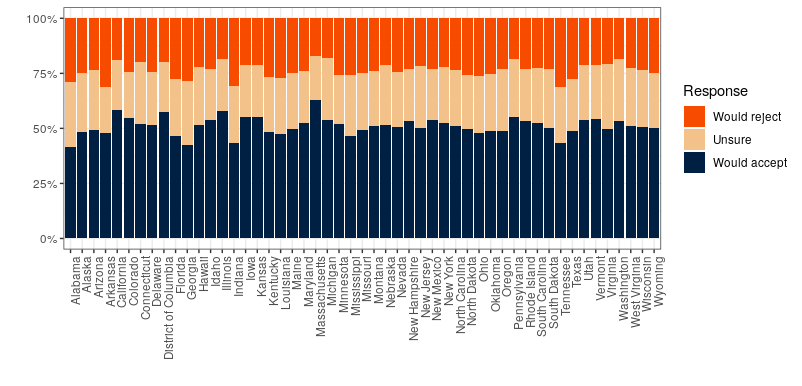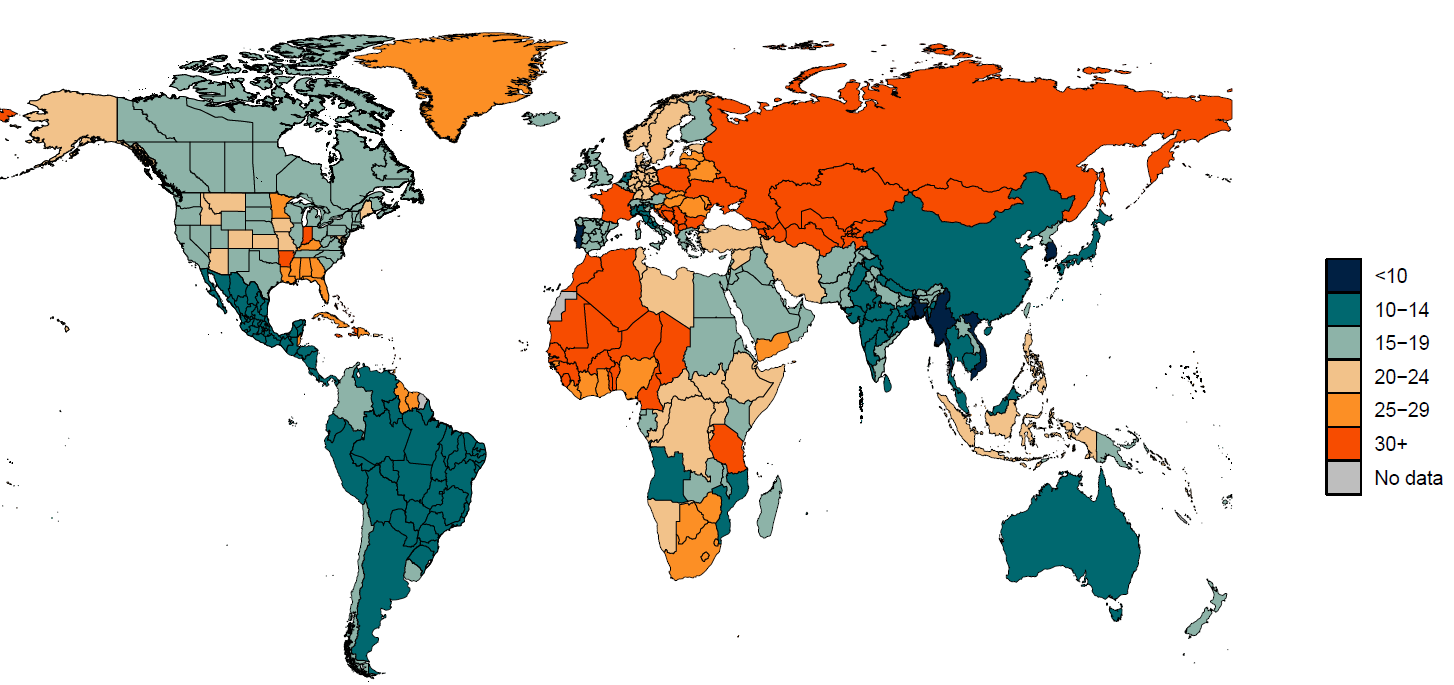IHME’s COVID-19 projections show that a fast vaccine rollout has the potential to save many lives globally. A fast vaccine rollout will also accelerate our return to normalcy. To date, delays in vaccination have occurred in many countries, including the US. Intensified efforts to ensure faster delivery are critical to slow the course of the pandemic in the coming months. Some countries such as Israel have achieved dramatic gains in vaccination coverage in a short period demonstrating that rapid scale-up is possible.
As vaccine rollout gets underway and delivery issues are progressively resolved, it is also important to monitor attitudes towards the vaccine and address populations where vaccine hesitancy is high. As of today, only 52% of Americans reported that they are willing to receive the vaccine (Figure 1), ranging from 41% in Alabama to 63% in Massachusetts. About 23% of Americans reported that they would not be willing to receive the vaccine, ranging from 17% in Massachusetts to 32% in Arkansas. About 25% of Americans are not sure about whether they are willing to receive the vaccine, ranging from 20% in Massachusetts to 29% in Alabama. Vaccine hesitancy has also been shown to vary by sex and by race.
There is a critical need for education campaigns targeted to subgroups of the population who are currently not willing to accept the vaccine. This information needs to be disseminated quickly so that by the time the vaccine is available, the vast majority of the population are willing to receive it.
Vaccine hesitancy is also potentially a huge impediment to successful rollout around the world. As seen in Figure 2, high rates of vaccine hesitancy are seen across many European countries where cases and deaths from COVID-19 are soaring, as well as in many Western African and Southeast Asian countries.
Figure 1: Percentage of all adults who would reject, accept, or are unsure about receiving the vaccine by state and DC, US

Figure 2: Percentage of all adults who would reject the vaccine
